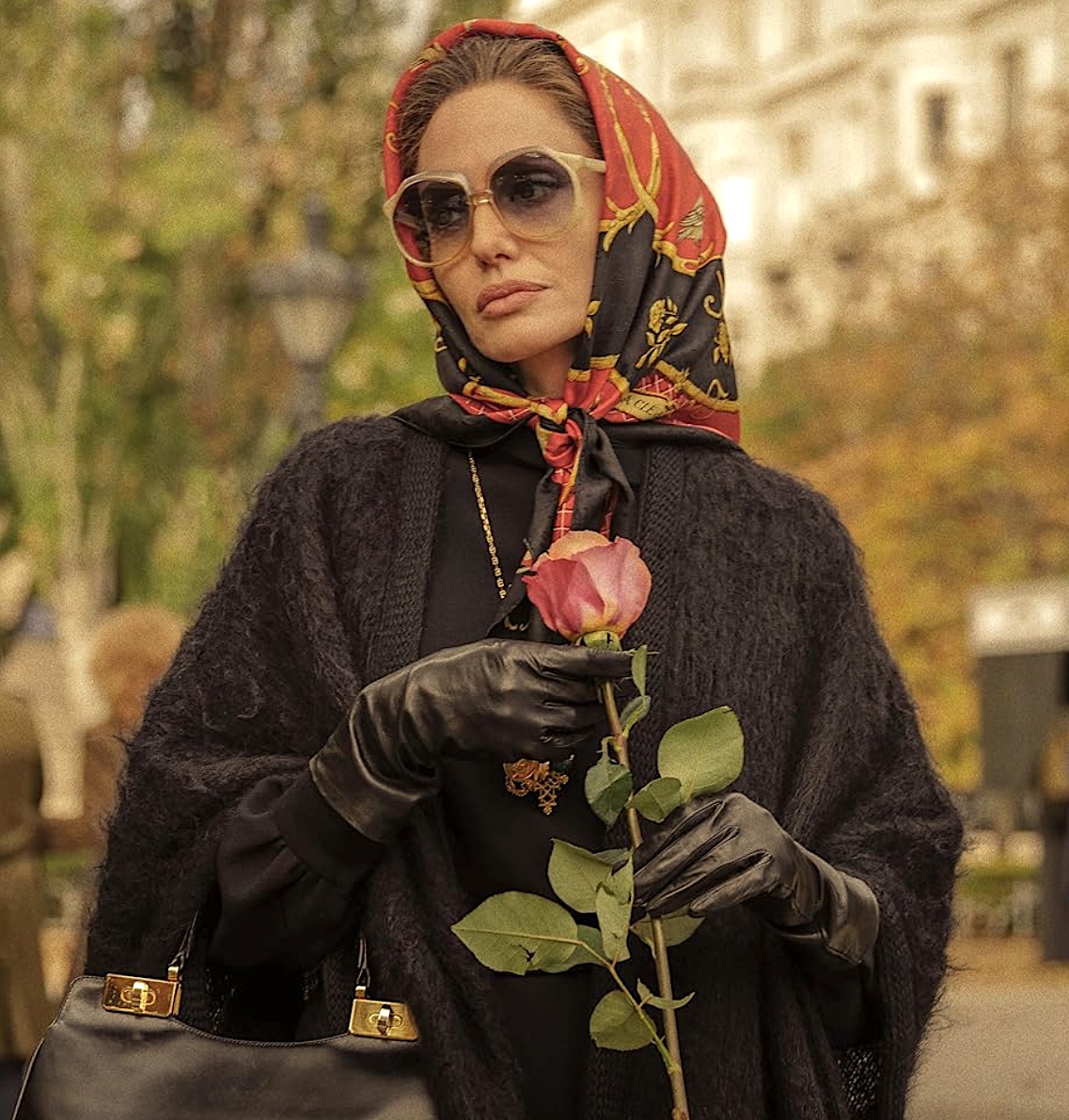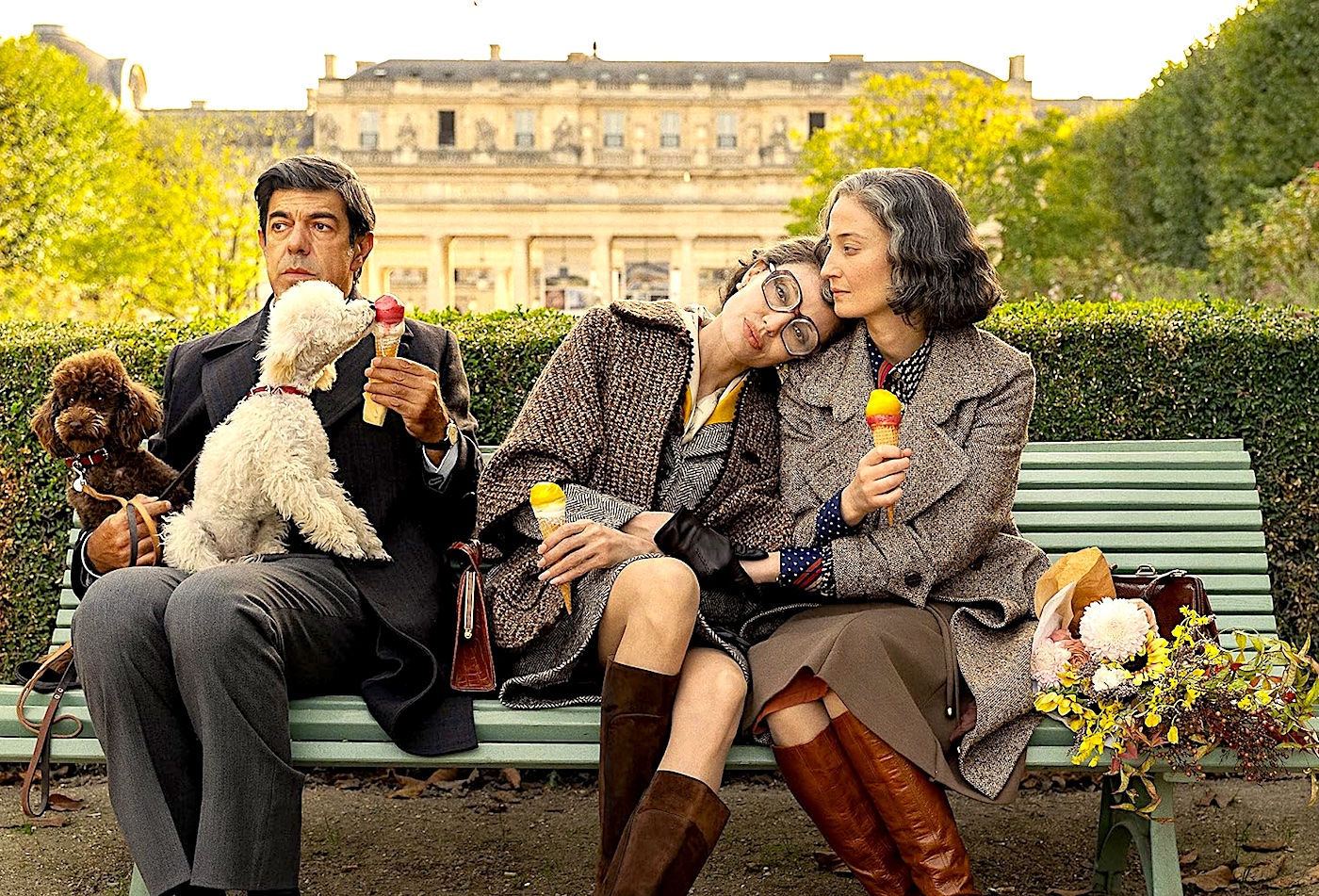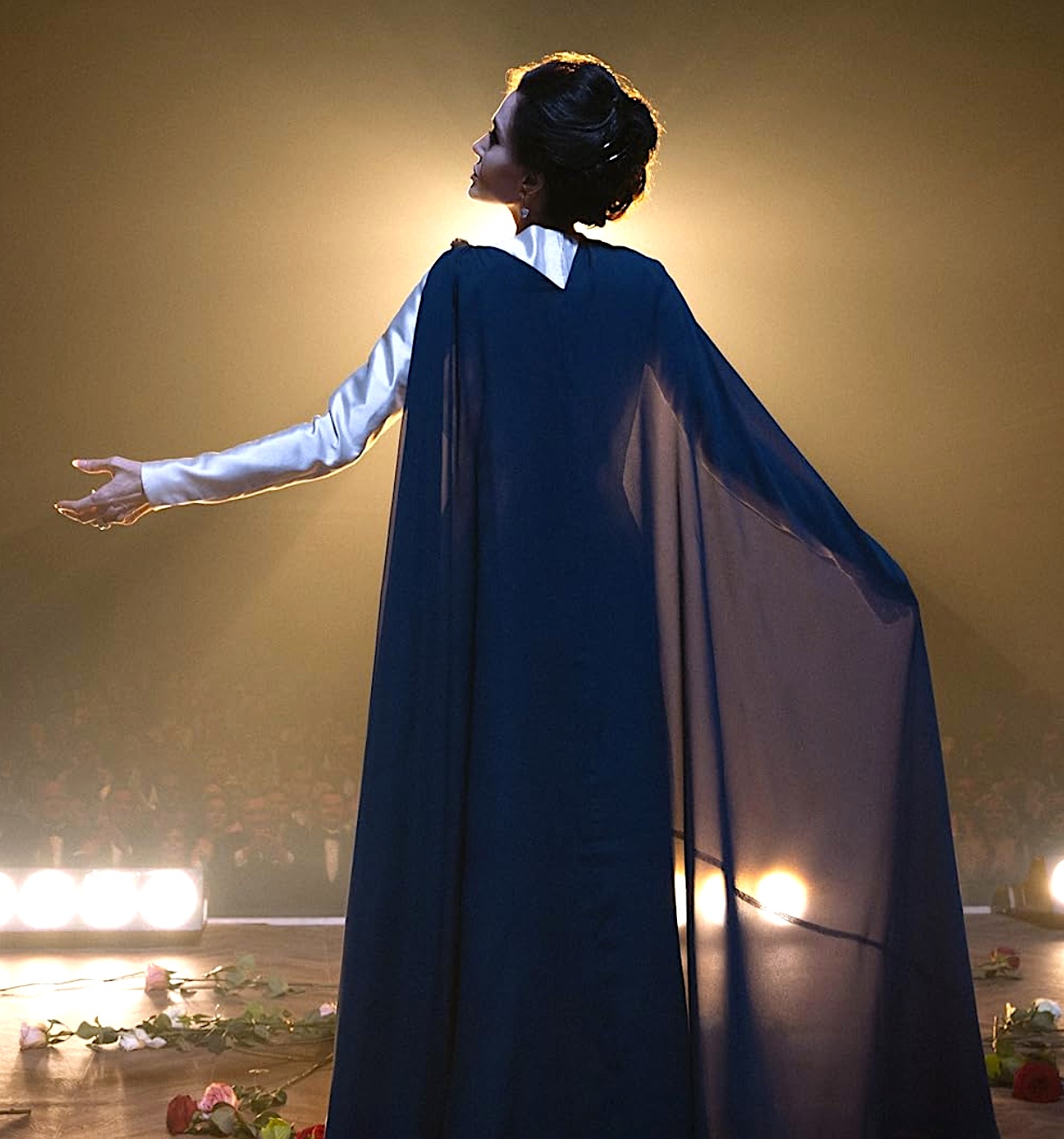As Bono once commented about Luciano Pavarotti, “the opera follows him off stage”. Legendary soprano Maria Callas would have known exactly what he meant, and she herself said “an opera begins long before the curtain goes up and ends long after it has come down.”
Pablo Larraín’s Maria completes his trilogy of films about famous and charismatic women at critical moments in their lives, the others being Jackie Kennedy (Jackie, 2016) and Princess Diana (Spencer, 2021). It picks up the daunting challenge of evoking the life but above all the myth of La Callas, one of a handful of opera legends who have broken the highbrow barrier to become truly universal figures. It pivots around a performance from Angela Jolie which stands a chance of elevating her from a mere movie star into something approaching greatness.
 Larraín zeroes on the final week of Callas’s life in September 1977, when she was living in Paris. Though only 53, her epic years were behind her and her health was failing. She drifts through the days in a miasma of reveries and remembered triumphs, her senses altered by copious doses of Mandrax (aka quaaludes). Larraín has invaluable support from Edward Lachman’s sumptuous cinematography, both monochrome and colour. It fully exploits the city’s belle epoque splendours, while also delivering carefully-wrought reincarnations of vintage footage of Callas in her prime. Scenes from a variety of opera houses are shot with opulent grandeur.
Larraín zeroes on the final week of Callas’s life in September 1977, when she was living in Paris. Though only 53, her epic years were behind her and her health was failing. She drifts through the days in a miasma of reveries and remembered triumphs, her senses altered by copious doses of Mandrax (aka quaaludes). Larraín has invaluable support from Edward Lachman’s sumptuous cinematography, both monochrome and colour. It fully exploits the city’s belle epoque splendours, while also delivering carefully-wrought reincarnations of vintage footage of Callas in her prime. Scenes from a variety of opera houses are shot with opulent grandeur.
Screenwriter Steven Knight (also the writer of Larraín’s Spencer, not to mention Peaky Blinders and SAS Rogue Heroes) has been able to evoke the pain and regret that coloured Callas’s final days. He even manages to have a little fun while he’s about it, for instance when Callas asks her devoted butler Ferruccio (Pierfrancesco Favino) to book her a restaurant table where the waiters know her – “I'm in the mood for adoration,” she tells him.
Callas’s Paris is bathed in a melancholy autumnal glow, and she lives in a grand and spacious apartment which is more like the Louvre than a home, attended by the loyal Ferruccio, housekeeper Bruna (Alba Rohrwacher) and a pair of poodles (all pictured below). When a film crew turns up to interview Callas, it jars somewhat when the interviewer is also called Mandrax (Kodi Smit-McPhee), a strangely maladroit way to flag up that what follows is going to exist in the twilight zone between fact and chemically-induced delusion. This guy isn’t exactly the world’s greatest interviewer either (“I’d like to walk with you through your life”). Maria even chides him, saying “you should be more persistent with your questions.”
 However, Jolie’s performance manages to transcend the banality of her interlocutor and evoke a hinterland of complex and poignant emotions. Larraín gets a tremendous leg up from being able to deploy some of opera’s finest moments, and as a source of instantly available emotion it’s impossible to beat. Even your Ennio Morricones or Hans Zimmers are no match for Verdi, Puccini and Bellini, and Callas singing Bellini’s "Casta Diva" or Puccini’s "O mio babbino caro" might even get cinema audiences on their feet, applauding. One of her signature pieces, "Vissi d’arte" from Puccini’s Tosca, could have been written for her – “I lived for my art, I lived for love” – and it appears here as a kind of requiem.
However, Jolie’s performance manages to transcend the banality of her interlocutor and evoke a hinterland of complex and poignant emotions. Larraín gets a tremendous leg up from being able to deploy some of opera’s finest moments, and as a source of instantly available emotion it’s impossible to beat. Even your Ennio Morricones or Hans Zimmers are no match for Verdi, Puccini and Bellini, and Callas singing Bellini’s "Casta Diva" or Puccini’s "O mio babbino caro" might even get cinema audiences on their feet, applauding. One of her signature pieces, "Vissi d’arte" from Puccini’s Tosca, could have been written for her – “I lived for my art, I lived for love” – and it appears here as a kind of requiem.
The painful beauty of the music counterpoints Callas’s recollections of her tumultuous life. It’s never quite clear whether her relationship with shipping magnate Aristotle Onassis was true love or another toxic addiction, but Onassis is played by Haluk Bilginer as nasty, brutish and short. The director also takes us back in time to Maria’s ugly girlhood experiences in wartime Greece, where the suggestion is that she and her sister were pimped out to the German occupiers. He makes a link to Jackie O via an encounter – imaginary, by all accounts – between Callas and John Kennedy, where the President is embroiled with Marilyn Monroe while his wife will of course end up with Onassis. The lifestyles of the rich and famous can be regrettably squalid.
 Though Jolie did some of her own singing for the role, used discreetly for episodes where the singer’s voice had passed its best, there’s no attempt to explore Callas’s professional musical relationships. There's no sign of tenor Giuseppe Di Stefano for instance, nor her famous feud with the soprano Renata Tebaldi (who remarked that “I have one thing that Callas doesn’t have – a heart”). Maybe Mr Mandrax put all that stuff in his documentary. Larraín’s goal is beyond, and he seems to have taken his cue from John Ford – “when the legend becomes fact, print the legend.”
Though Jolie did some of her own singing for the role, used discreetly for episodes where the singer’s voice had passed its best, there’s no attempt to explore Callas’s professional musical relationships. There's no sign of tenor Giuseppe Di Stefano for instance, nor her famous feud with the soprano Renata Tebaldi (who remarked that “I have one thing that Callas doesn’t have – a heart”). Maybe Mr Mandrax put all that stuff in his documentary. Larraín’s goal is beyond, and he seems to have taken his cue from John Ford – “when the legend becomes fact, print the legend.”














Add comment